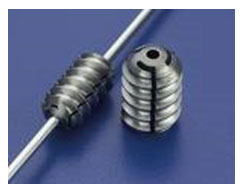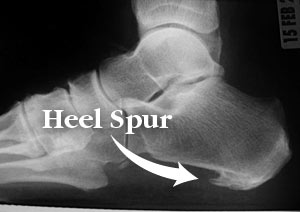Hyperpronation and Children
By Michael A. Zapf DPM, MPH, FACFAS
Pronation is the flattening of the foot that occurs in every walking cycle when the foot lands on the ground and becomes flexible to adapt to changes in terrain. It is the natural part of the flattening (pronation) and unflattening (supination) cycles our feet go through with every step. Some people, children included, pronated too much. “Too much” are difficult words to quantify but, like ±the Supreme Court judges said about another subject, you’ll know it when you see it. I use a 1 to 10 scale and I think too much pronation is at the 8-10 levels. Children who are extra-flexible (double jointed) pronate worse than those who do not. They pronate to the end of the range of motion of the joints and beyond.
Does pronation always need treatment?
Certainly, if your child’s pronation results in a painful foot, treatment is necessary. But what do you do if your child pronates excessively but does not have pain or other symptoms? For these children I use a pragmatic approach. Children who pronate a 1-3 on a 10 point scale just need to wear stable shoes such as an athletic shoe. Skateboarding shoes, sandals and thongs usually do not provide enough foot support. I rarely make orthotics for these children. Children who pronate between a 4-7 on a 10 point scale can certainly benefit from functional prescription orthotics, especially if they have foot fatigue, leg pain or difficulty with extended athletic activities. I believe children who pronate at a level of 8 or higher deserve functional prescription orthotics and they should be made a priority. Hyperpronated children give way to hyperpronated adults and all the problems that such a foot is heir to with plantar fasciitis, bunions, hammertoes, arch pain and many more maladies.
 Three degrees of pronation. I would grade the foot on the far left as a “3″ on a 10-point pronation scale, the one in the middle as a “9″ and the feet on the right as a “10.” Three degrees of pronation. I would grade the foot on the far left as a “3″ on a 10-point pronation scale, the one in the middle as a “9″ and the feet on the right as a “10.” |
What are orthotics?
Functional orthotics that are used by podiatrists are thermal plastic support devices that are placed in the shoe and hold the foot at a predetermined position. That predetermined position is one where we feel your child’s foot would best function. We take a fiberglass or plaster impression of the foot while holding it in the correct position. The molds are sent to any one of several laboratories where devices will be made to our specific prescription. Please see our orthotic brochure for more complete information. To determine if your insurance will pay for some or all of your orthotics we ask you to call down and give them the following billing codes:
| 29799 | casting procedure for orthotics |
| A4590 | fiberglass casting sock, if used |
| L3000-LT | left orthotic device |
| L3000-RT | right orthotic device |
Our office accepts the fee approved by your insurance company. We also have a cash discount price in case there is no insurance coverage. Details of this program are in our orthotic brochure.
Richie Brace
When an in-shoe orthotic does not supply enough support, we can make an orthotic with two plastic stirrups that attached to both sides of the ankle. The stirrups are hinged so that the ankle joint can have successful up and down motion but still providing extreme support against pronation. This device is often called a Richie brace. Some children pronate so much that they need to wear a Richie brace full-time and others just need to wear it when playing soccer, basketball or other aggressive side to side sports. For Richie braces we use the insurance code L1970. Your insurance carrier can tell you what part of that for which you might be responsible.
If it still hurts, think “arthroereisis” or a tiny internal orthotic for the foot
Orthotics are great but they are not miracle workers. Children who pronate excessively often pronate too much for an orthotic to work effectively. In other cases orthotics work just fine but the child participates in ballet, gymnastics, martial arts or other activities where they cannot wear orthotic containing shoes. In these circumstances we can use a jellybeans sized “internal orthotic” that is slipped into the lateral side of the foot that stops the pronation cold. This procedure is called subtalar arthroeresis and takes about 20 to 30 minutes per foot under general anesthesia. While we give children a removable walking cast where after surgery they often surprise us by walking comfortably on their feet the day after surgery. The arthroeresis implant, itself, costs about $1000 each and the fee for putting it into the foot, which has an “unlisted” code of 99097, is about $1200. The two greatest charms of the internal arthroeresis implant is the ease of putting it into the foot and the similar ease of removing it if that is ever needed. Removing a subtalar joint arthroeresis implant is a very infrequent event.
orthotic to work effectively. In other cases orthotics work just fine but the child participates in ballet, gymnastics, martial arts or other activities where they cannot wear orthotic containing shoes. In these circumstances we can use a jellybeans sized “internal orthotic” that is slipped into the lateral side of the foot that stops the pronation cold. This procedure is called subtalar arthroeresis and takes about 20 to 30 minutes per foot under general anesthesia. While we give children a removable walking cast where after surgery they often surprise us by walking comfortably on their feet the day after surgery. The arthroeresis implant, itself, costs about $1000 each and the fee for putting it into the foot, which has an “unlisted” code of 99097, is about $1200. The two greatest charms of the internal arthroeresis implant is the ease of putting it into the foot and the similar ease of removing it if that is ever needed. Removing a subtalar joint arthroeresis implant is a very infrequent event.
The Role of Tight Gastrocs
During your child examination in our office we will do a maneuver to assess the tightness of your child’s Achilles tendon, specifically the portion of the Achilles made up from the tendon fibers that derive from the gastrocnemius muscle. A tight gastroc it is a major source of pronation. If the gastrocnemius muscle is tight it could be both a cause of pronation and a source of foot pain with orthotics. Simple treatments for a tight gastrocnemius tendon including the use of heel lifts, heels on shoes and stretching techniques. If pronation is painful and surgery is ever contemplated then the role of a tight gastrocnemius tendon must be assessed. There are occasions when the gastrocnemius portion of the Achilles tendon needs to be surgically stretched or lengthened in a procedure called a gastrocnemius recession. We do this procedure with an endoscope using a small half-inch incision. The postoperative care for a gastrocnemius recession would include the use of a removable walking cast or a splint for 2 to 3 weeks after the surgery. Since crutches are sometimes necessary, we much prefer doing only one foot at a time. The surgery results in a very small loss of strength from the tendon which can usually be overcome with strengthening exercises and physical therapy. A small weakening of the muscle is the trade-off for eliminating a dramatic force of pronation that is producing pain and debility in your child. Note, the gastrocnemius recession code is 27687 and the fee for this is $1150. Despite any fees we charge, we accept the fee approved by your insurance company and a call to them can tell you what this figure is for your insurance.
Extra bones on the inside of the foot
A small number of unlucky children have an extra bone (technically it is called an accessory navicular bone) on the inside of the foot below the inside ankle bone. Most of the time this extra bone does not get in anyone’s way and can be safely left alone. Sometimes, however, this little bone hurts out of proportion to its size. It hurts either because the bone wedges against the side of the shoe or because the posterior tibial tendon, which normally inserts on the bottom of the foot, inserts, instead, on the accessory bone. The first treatment for a painful accessory bone would be to make an orthotic special accommodation made for the extra bone. In most cases this will allow them to wear their regular shoes and do their regular activities without pain. If the little bone hurts too much, it needs to be removed. The removal of this bone is done under a light general anesthesia and takes about 45 minutes. The posterior tibial tendon that is attached to this bone is usually tucked under the foot and attached with a little anchor. Postoperatively we asked these children to be in a removable walking cast for three weeks and crutches are sometimes needed. If children pronated excessively, this procedure, alone, will not stop their pronation. If painful pronation is part of the symptom complex the usual treatment would be the removal of the accessory navicular, reefing up the posterior tibial tendon, the subtalar arthroeresis implant and, if necessary, lengthening the gastrocnemius portion of the Achilles tendon.
Summary:
Children who have normal arched or slightly pronated feet and who do not have symptoms of pain or disability probably do not require orthotics. Children who pronate moderately and do not have significant pain do not “require” orthotics but probably it’s not bad to have them. Children who pronate excessively, in the 8 to 10 range on a 10 point scale, probably should be treated with orthotics, at least. Symptomatic children need the amount of support and treatment that it takes for them not to be symptomatic. It should never hurt to be a kid. If an orthotic is all that it takes, that we can stop there. Pain, despite orthotics, demands the use of a Richie brace or even surgery. The most common surgery for hyperpronation is the use of a subtalar arthroeresis implant which is a minimally traumatic surgery performed with a half-inch incision. It does require a light general anesthesia, however. If tight gastrocnemius tendons are found in need to be addressed. If heel lifts or heeled shoes cannot solve the tight gastrocnemius problem by themselves then a gastrocnemius recession, also done with a half-inch incision, should be entertained. Many more complex flat foot surgeries are available for more special cases as you will see as you “Google” the following words:
Pediatric flat foot, Pronation and hyperpronation, Arthroereisis, Subtalar implant, Gastrocnemius recession, Accessory navicular, Functional foot orthotics, Custom foot orthotics




